Embarking on a journey through history, I visited 23 remarkable historical sites around the world in just six months. Each location offered a unique glimpse into the past, shaping my understanding of history in profound ways. Here, I highlight ten discoveries that left a lasting impression and changed my perspective forever.
1. The Colosseum, Rome
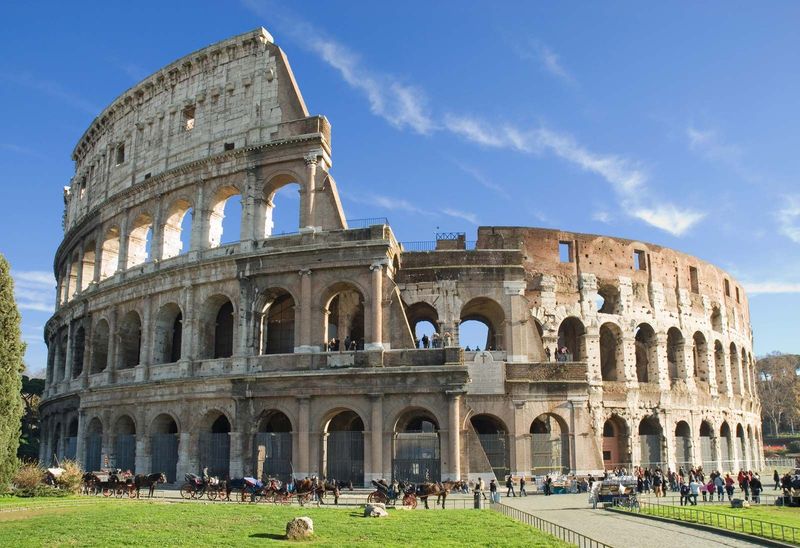
Standing in the shadow of the grand Colosseum, one can’t help but feel the weight of ancient Roman history. This iconic amphitheater, once the stage for gladiatorial combat, is a testament to Rome’s architectural ingenuity. Exploring its corridors, I imagined the tumultuous roars of the crowd and the adrenaline of the games.
The Colosseum’s enduring presence serves as a reminder of Rome’s grandeur and the complexities of its society. Walking through its arches, I gained a deeper appreciation for the cultural and political dynamics of ancient Rome, making history feel strikingly alive.
2. Machu Picchu, Peru

High in the Andes, Machu Picchu stands as a marvel of Incan engineering. The site, shrouded in mist, offers breathtaking views and a sense of mystery. As I wandered through the terraced slopes and stone structures, I pondered the ingenuity required to build such a city atop a mountain.
The lush surroundings and the intricate stonework speak volumes about the Incas’ relationship with nature and their architectural prowess. Witnessing the sunrise over Machu Picchu, I felt a profound connection to the past, as if touching the essence of a lost civilization.
3. Great Wall of China

Stretching over rugged terrain, the Great Wall of China is an awe-inspiring feat of human endeavor. This massive structure, built to protect against invasions, spans deserts, mountains, and plains. As I walked along its ancient stones, I marveled at the sheer scale and the effort required to construct it.
The wall’s winding path seemed endless, capturing the spirit of resilience and determination of those who built it. Standing atop the wall, with panoramic views, I realized the magnitude of China’s historical narrative and its enduring legacy in shaping world history.
4. Stonehenge, England
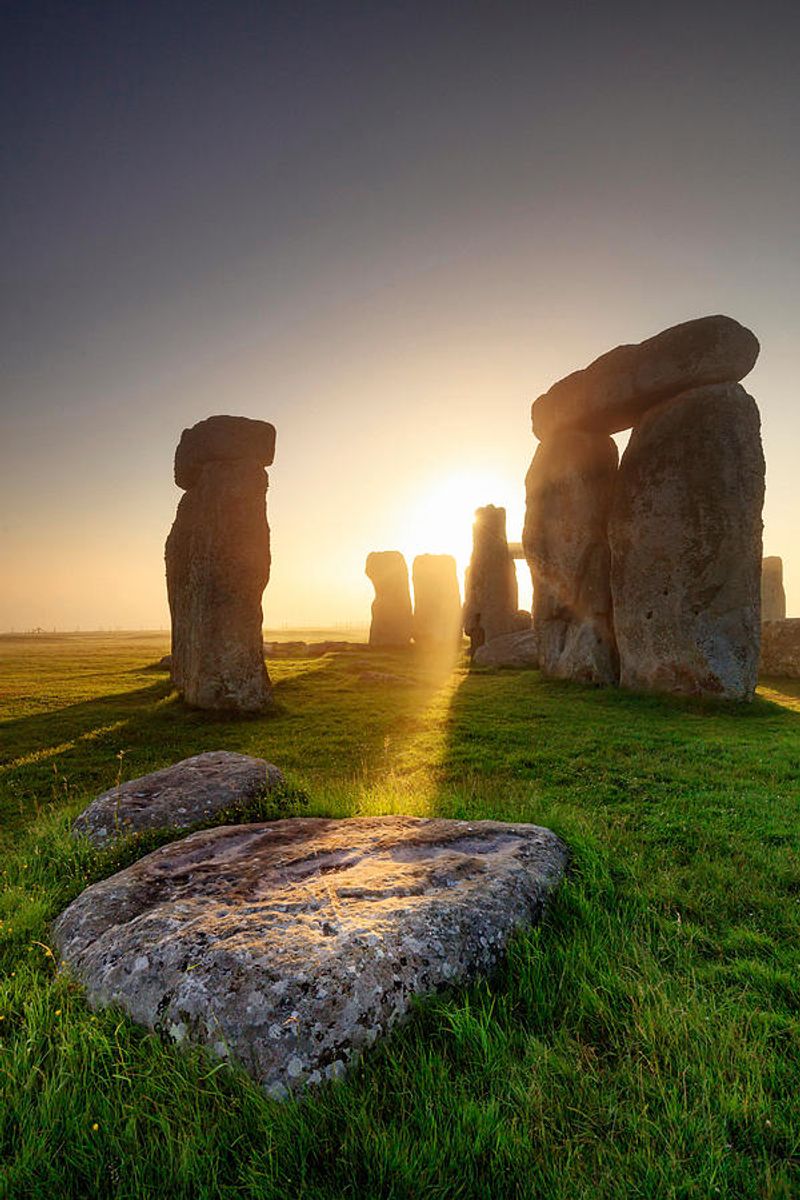
Mystery and magic surround Stonehenge, where giant stones stand in silent circles. This prehistoric monument, nestled in the English countryside, has baffled historians and archaeologists alike. As the sun rose, casting shadows on the stones, I felt the enigmatic energy that has captivated many before me.
Stonehenge invites speculation about its purpose, whether as a spiritual site, an astronomical calendar, or a burial ground. Standing in its midst, I was reminded of humankind’s quest for understanding the cosmos and the lengths taken to connect with the universe.
5. Pyramids of Giza, Egypt
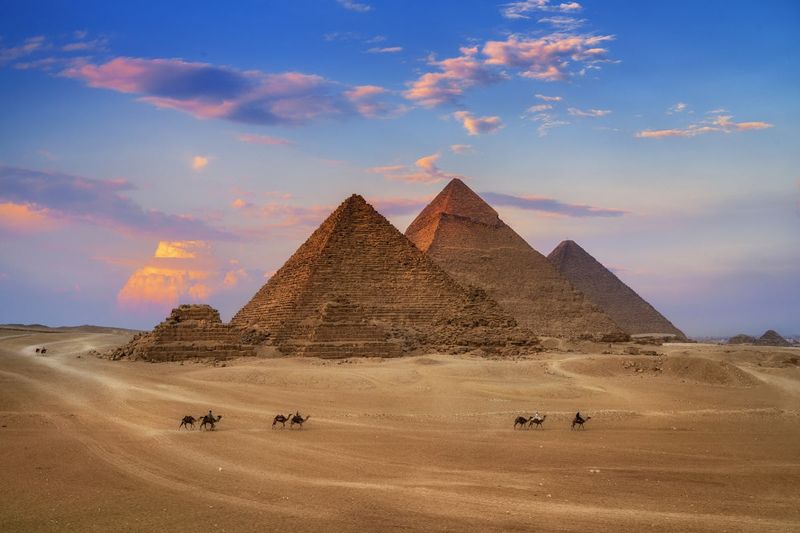
The Pyramids of Giza, majestic and monumental, rise from the Egyptian sands with timeless grandeur. These ancient wonders, built as tombs for pharaohs, reveal the Egyptians’ mastery over architecture and their belief in the afterlife. Walking among these colossal structures, I was in awe of the precision and planning involved in their creation.
The pyramids are a powerful symbol of ancient Egypt’s civilization and its enduring mysteries. Standing beside them, I felt a connection to a time long past, where the lines between life and afterlife were intricately drawn.
6. Taj Mahal, India

The Taj Mahal, with its exquisite white marble and intricate inlays, is a symbol of love and architectural beauty. Commissioned by Emperor Shah Jahan for his beloved wife, this mausoleum stands as a testament to enduring love and artistic craftsmanship.
As I wandered through its gardens, the symmetry and serene ambience enveloped me. The play of light on its surface creates a mesmerizing effect, changing with the time of day. Visiting the Taj Mahal was a journey into the heart of love and devotion, captured in stone and artistry.
7. Petra, Jordan
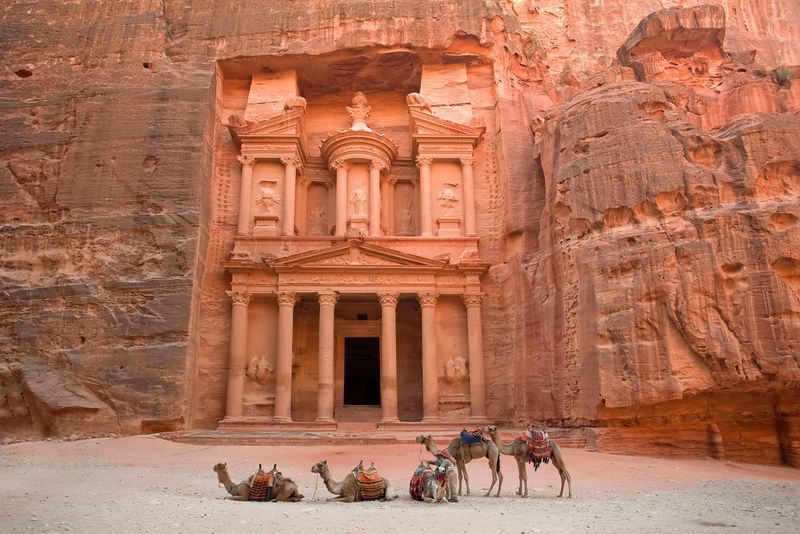
Hidden within Jordan’s rugged terrain, Petra is an ancient city carved into rose-red cliffs. This archaeological marvel, once a bustling trading hub, offers insights into the Nabateans’ rich culture.
Walking through the narrow Siq, the Treasury’s facade emerged in splendor, showcasing the artistry and grandeur that Petra is famed for. Exploring its tombs and amphitheaters, I appreciated the blend of natural beauty and human ingenuity. Petra stands as a testament to the harmonious coexistence of man and nature, a living canvas of history.
8. Acropolis of Athens, Greece
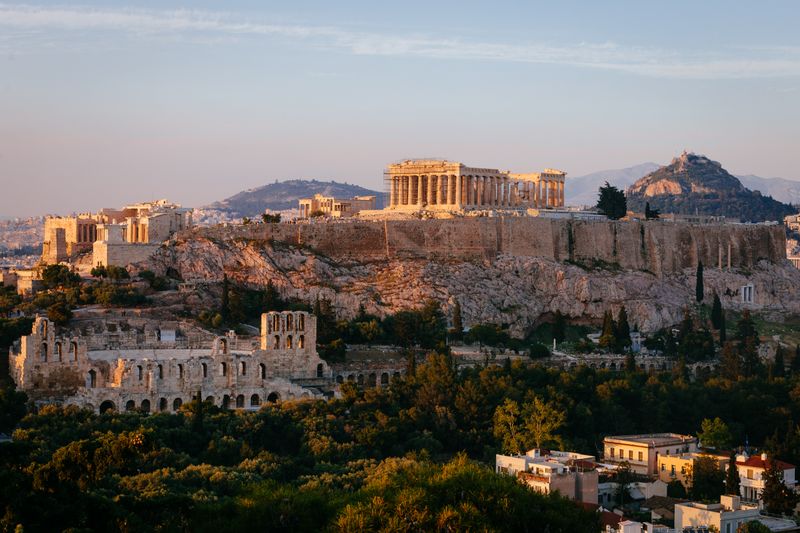
Perched atop a rocky hill, the Acropolis of Athens is a symbol of ancient Greek civilization. The Parthenon, its crowning jewel, reflects the Greeks’ dedication to art, philosophy, and democracy. As I climbed the steps, I felt the spirit of the philosophers who once walked these grounds.
The Acropolis offers a panoramic view of Athens, a city that blends the ancient with the modern. Standing among these ruins, I witnessed the cradle of Western civilization and felt inspired by the enduring legacy of Greek thought and culture.
9. Angkor Wat, Cambodia

Angkor Wat, the largest religious monument in the world, stands as a testament to the Khmer Empire’s grandeur. Its intricate carvings and towering spires are a tribute to Hindu mythology and history. As I wandered through its corridors, I was captivated by the artistic detail and spiritual atmosphere.
The temple’s alignment with the sun and its celestial symbolism are awe-inspiring. Watching the sunrise over Angkor Wat, I felt a profound connection to the spiritual heritage of the people who built it and their quest for divine harmony.
10. Alhambra, Spain

Perched on a hill, the Alhambra is an exquisite blend of Islamic art and architecture. This fortress, with its intricate mosaics and serene gardens, reflects the splendor of Moorish culture in Spain.
As I strolled through its halls, the play of light and shadow created a captivating ambience, echoing the poetry of its past. The Alhambra’s beauty is matched only by its history, a tale of conquests and coexistence. It serves as a reminder of the cultural fusion that shaped Spain and left an indelible mark on history.



